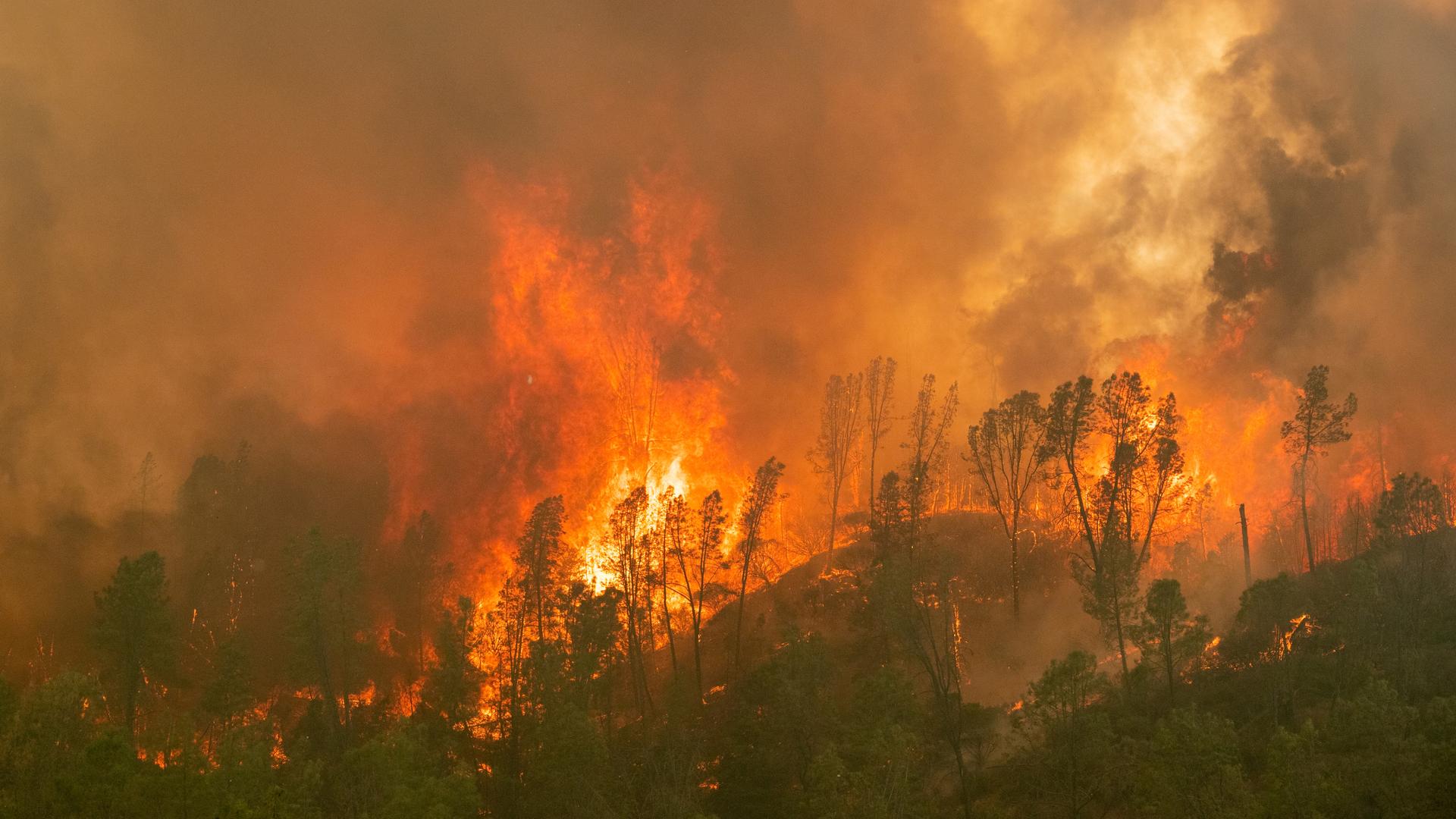Some of California’s largest-ever fires have been raging across the state, forcing tens of thousands from their homes as forecasters warned of further blazes sparked by lightning.
Several thousand lightning strikes in recent days ignited fires that left thick smoke blanketing the region on Saturday.
The total area burned for all the fires in California this week is “close to one million acres (400,000 hectares),” according to CalFire public information officer Jeremy Rahn.
“More lightning is anticipated tomorrow (Sunday) and into Tuesday – everyone must remain alert and have an evacuation plan,” the agency said on Twitter.
Extreme weather conditions has led to fire growth, making the #LNULightningComplex now the 2nd largest fire in California and the #SCULightningComplex the 3rd. Dry lightning is expected today through Tuesday so stay #WildfireReady by having an evacuation plan in place. pic.twitter.com/ekNve67hxI
— CAL FIRE (@CAL_FIRE) August 23, 2020
Bad weather sparking more fires
The National Weather Service added: “With severe drought and exceptionally dry fuels present, dry thunderstorms could spark additional wildfires this weekend.”
“The western US and Great Plains are shrouded under a vast area of smoke due to ongoing wildfires that extend from the Rockies to the West Coast.”
About 2,600 firefighters are tackling the two largest blazes, out of 13,700 battling “nearly two dozen major fires,” according to Rahn.
“If you don’t believe in climate change, come to California,” tweeted state Governor Gavin Newsom alongside a dramatic photograph of huge clouds of smoke rising from fires.
“This is from today. And is just a small part of the nearly 600 fires we are battling this week.”
If you don’t believe in climate change, come to California.
This is from today. And is just a small part of the nearly 600 fires we are battling this week. pic.twitter.com/iv4stV3Aax
— Gavin Newsom (@GavinNewsom) August 23, 2020
He had earlier tweeted an ABC News video showing apocalyptic images of smoldering orange roadsides thick with smoke, with sparks flying as trees burned ferociously.
Wineries in the famed Napa and Sonoma regions, which are still reeling from blazes in recent years, are under threat.
“Many of these firefighters have been on the lines for 72 hours, and everybody is running on fumes,” Assemblyman Jim Wood of the Healdsburg district in Sonoma told the Los Angeles Times.
“Our first responders are working to the ragged edge of everything they have.”
READ MORE: California struggles to contain deadly wildfires which have doubled in size
Bodies recovered
The two largest blazes – dubbed the SCU Lightning Complex and the LNU Lightning Complex – have burned about 660,000 acres and destroyed more than 840 structures.
The SCU fire had burned nearly 340,000 acres by early Sunday, making it the second-largest fire in California history. It was 10 percent contained.
The LNU blaze covered 325,000 acres and was the third largest in state history. It was 15 percent contained.
According to the Los Angeles Times, the 1.2 million acres burned in California in the past month is far higher than the 259,000 acres destroyed in the whole of last year. It was “an astonishing toll so early in fire season,” the paper said.
Five deaths have been linked to the latest flare-ups, with four bodies recovered on Thursday, including three from a burned house in a rural area of Napa County.
But many residents have refused evacuation orders.
“At least if we’re here, we know exactly what’s going on,” Napa resident John Newman, 68, told the San Francisco Chronicle as he sat in a lawn chair in his driveway. “Family is worried, but it’s a little different if you’re here firsthand.”
Nature reserves were also ravaged. The Big Basin Redwoods State Park said that some of its historic buildings had been destroyed by flames.
The park, where giant redwood trees of well over 500 years old can be found, was “extensively damaged,” it said.
About 119,000 people have been evacuated, with many struggling to find shelter and hesitating to go to centers set up by authorities because of coronavirus risks.
In some counties south of San Francisco, evacuees opted to sleep in trailers along the Pacific Ocean as they fled nearby fires, while tourists were urged to leave to free up accommodation.
Fire crews, surveillance equipment and other firefighting hardware was being sent from states including Oregon, New Mexico and Texas.
But faced with the sheer scope of the disaster, Newsom also asked for help from Canada and Australia, which he said had “the world’s best firefighters.”










Discussion about this post